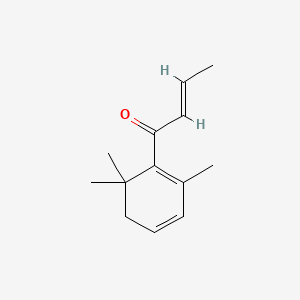| Authors | Title | Published | Journal | PubMed Link |
|---|---|---|---|---|
| Motooka R et al. | Characteristic odor components of essential oils from Eurya japonica. | 2015 | J Oleo Sci | pmid:25843279 |
| Feng H et al. | Influence of cluster zone leaf removal on Pinot noir grape chemical and volatile composition. | 2015 | Food Chem | pmid:25466040 |
| Willner B et al. | Characterization of the key aroma compounds in Bartlett pear brandies by means of the sensomics concept. | 2013 | J. Agric. Food Chem. | pmid:24004345 |
| Paterson A et al. | Environmental and seasonal influences on red raspberry flavour volatiles and identification of quantitative trait loci (QTL) and candidate genes. | 2013 | Theor. Appl. Genet. | pmid:22890807 |
| Uddin AN et al. | A novel mechanism of filaggrin induction and sunburn prevention by β-damascenone in Skh-1 mice. | 2012 | Toxicol. Appl. Pharmacol. | pmid:22982537 |
| Benkwitz F et al. | Evaluation of key odorants in sauvignon blanc wines using three different methodologies. | 2012 | J. Agric. Food Chem. | pmid:22663147 |
| Lloyd ND et al. | Formation of Damascenone under both commercial and model fermentation conditions. | 2011 | J. Agric. Food Chem. | pmid:21254776 |
| Sefton MA et al. | Occurrence, sensory impact, formation, and fate of damascenone in grapes, wines, and other foods and beverages. | 2011 | J. Agric. Food Chem. | pmid:21866982 |
| Natsch A et al. | Relating skin sensitizing potency to chemical reactivity: reactive Michael acceptors inhibit NF-κB signaling and are less sensitizing than S(N)Ar- and S(N)2- reactive chemicals. | 2011 | Chem. Res. Toxicol. | pmid:22023385 |
| Deng XH et al. | [Effects of soil, climate, and their interaction on some neutral volatile aroma components in flue-cured tobacco leaves from high quality tobacco planting regions of Hunan Province]. | 2010 | Ying Yong Sheng Tai Xue Bao | pmid:21043117 |
Damascenone
Damascenone is a lipid of Prenol Lipids (PR) class.
